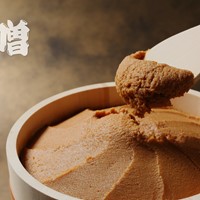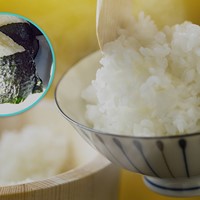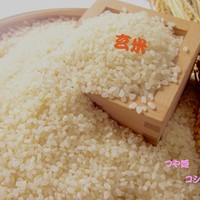Slurp-Worthy: The Delicious Diversity of 5 Types of Ramen

This page contains affiliate links.
Ramen is one of the most famous of Japan's foods, with great popularity both in Japan and abroad, but many need to learn just how varied this dish can be. While we all know the stereotypical image of a bowl of ramen, there are many types of ramen, including different broths, toppings, and noodles. This is mainly due to the history of ramen.
Ramen was first introduced to Japan by Chinese workers as a type of Chinese noodle dish. It gained popularity fast and, over time, began to spread throughout the country. As it became more widespread, regional variants started to develop, and many of these regional variants are now established styles of ramen available nationwide. Here we will review some of these different types of ramen and their uniqueness.
Ramen Broth Types
Ramen can generally be divided into three main parts – the broth, the toppings, and the noodles. The broth is often considered the most essential part of the ramen, as it provides the flavor and identity of the dish. The broth also takes the longest time and effort, which adds to its significance.
1. Shoyu (Soy Sauce) Ramen

Shoyu, or soy sauce, ramen uses soy sauce as its main seasoning. The broth is generally clear, with a light brown color and a tangy flavor. The broth is deep and complex without being overly heavy. This style of ramen originated in Yokohama and was popularized throughout the Kanto region of Japan. Traditionally, it uses chicken or seafood stock, but pork-based shoyu ramen is also becoming more common.
2. Miso Ramen

As the name would suggest, miso ramen is based on miso. This creates a thick, rich, and deep umami flavor in the broth. Miso ramen is actually the youngest style of ramen, having only been developed in the 1960s. Still, it is just as popular as the other styles. It originated in Northern Hokkaido, where the rich and hearty broth is ideal for cold weather. Miso ramen is often based on chicken stock, although other variations exist. As the youngest variant, it is most likely to have unique or unusual toppings not found elsewhere.
3. Tonkotsu (Pork Bone) Ramen

Tonkotsu ramen is one of the most popular and well-known styles of ramen nowadays. The name refers to pork bones, the basis of the stock and the predominant flavor. This broth has minimal seasoning outside the pork bones, cooked for hours to create a thick and milky stock. This ramen originated in Fukuoka, in the southern part of Japan, throughout Japan, and worldwide. Tonkotsu ramen is often served with toppings such as benishoga (pickled red ginger) and sometimes with takana (pickled takana).
4. Shio (Salt) Ramen

Shio ramen is the oldest and perhaps simplest style of ramen broth, with mainly salt seasoning. Shio ramen has a light and clear broth, avoiding the thick and heavy flavors of some other types. The broth is usually chicken-based. Shio ramen also originated in Hokkaido but was from the port city of Hakodate.
5. Tan Tan Ramen (Tantanmen)

Tan tan ramen, also known as tantanmen, is one of the more unique styles of ramen. It is one of the only versions of ramen with a spicy flavor, and it was initially based on a different Chinese food to the other ramen styles. The toppings also differ significantly, with ground pork being the most common and not present in other types. The broth is light and spicy and appears orange due to the sesame paste included.
Ramen Toppings

The second central part of ramen is the toppings. These include the meat, vegetables, and other garnishes added to the top of the ramen. Several toppings are commonly seen in ramen.
Chashu (pork slices)
Often considered the standard for meat in ramen, chashu is slices of roasted or braised fatty pork. This can also be pork belly slices.
Onsen Tamago (soft-boiled egg)
The runny yolk adds to the flavor and texture of the broth, while the white absorbs the taste of the ramen.
Nori (seaweed)
A form of dried, thin seaweed, is commonly added to ramen. It can be in the square to rectangle sheets that nori typically comes in or can be shredded before being added to the ramen.
Menma (fermented bamboo shoots)
Usually crunchy, which adds a textural difference to the dish. At the same time, the flavor is slightly sweet, adding new flavors to the dish. Menma can be one of the most refreshing and enjoyable additions to ramen.
Others
There are still many other delicious condiments that you might encounter when enjoying Japanese ramen, these include but are not limited to negi (green onions), tofu (bean curd), kamaboko (steamed fish cake), narutomaki (fish cake with a distinctive white and pink spiral), benishôga (picked red ginger) and moyashi (bean sprouts).
Ramen Noodles
The third aspect of ramen is the noodles. Usually, ramen noodles are thin, springy wheat noodles made with alkaline water. While there are 'standard' ramen noodles, some variations depend on the ramen shop's type and preferences. These can include thicker, flatter, extremely long, thin, and shorter noodles. There are also various textures, usually ranging from soft to firm. Many ramen shops will allow customers to choose the consistency they prefer in their noodles.
Ramen for Those with Dietary Restrictions
Vegetarian & Vegan Options
In Japan, vegan and vegetarian ramen options are becoming increasingly popular as more people embrace plant-based diets. Many restaurants across the country now offer delicious and satisfying meat-free ramen dishes, with some establishments even specializing in vegan and vegetarian ramen, offering flavorful vegetable broths, rich in umami, and feature a variety of toppings like seasoned tofu, mushrooms, and fresh vegetables.
For those who prefer to enjoy ramen at home, a growing number of online retailers provide vegan and vegetarian ramen kits and instant noodles, making it easy to prepare a tasty and nutritious meal in the comfort of your own kitchen. With the growing availability of plant-based ramen options in Japan in restaurants and online, there has never been a better time to enjoy this classic Japanese dish without compromising your dietary preferences.
Halal Options
Halal ramen options in Japan have become more accessible in recent years, catering to the growing number of Muslim travelers and residents seeking authentic Japanese cuisine that adheres to their dietary requirements. Several restaurants now offer halal ramen dishes which use carefully sourced ingredients and follow strict halal guidelines. These establishments often serve delectable ramen with rich, flavorful broths made from chicken or vegetables, and various toppings like halal-certified meat, seafood, and fresh vegetables.
A variety of online retailers offer halal ramen kits and instant noodles that meet the necessary standards, making it convenient to prepare a delicious meal in your own kitchen. With the increasing availability of halal ramen options in Japan, both in restaurants and online, adhering to one's dietary beliefs while savoring this iconic Japanese dish has become a delightful experience.
Options for People with Allergies
A growing number of eateries now offer allergen-friendly ramen dishes, with some even providing separate menus or customization options to cater to specific allergies, such as gluten-free noodles for those with gluten sensitivity or wheat allergies.
Additionally, for those who prefer to shop online, you can find allergen-free ramen kits and instant noodles, ensuring that everyone can enjoy a delicious and safe meal. These products often include alternative ingredients, such as rice noodles or soy-based broths, to accommodate various dietary restrictions.
Ramen is Diverse & Delicious
The ramen world is much more extensive than most people initially think. Each aspect of the ramen has a range of styles and variations to best create an ideal dish. Whether it is rich miso ramen or light shio ramen, exploring this world of ramen is a great way to expand your understanding of Japanese cuisine and cultural understanding.
If you like what you read, be sure to read our multitude of other articles on Japanese food and cuisine!
























